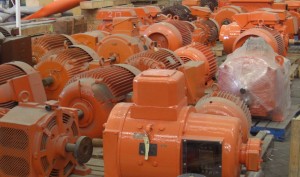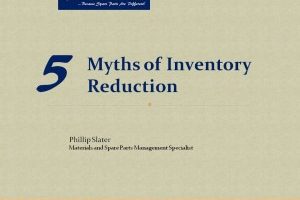One of the issues that arise with spare parts management in every industry is the management of excess inventory. This is particularly so with engineering spares, used to provide operational support to maintenance and production. With these spare parts there is often a high number of items that are used
Do you have an opinion about the Oniqua Optimiser?
Q: Do you have an opinion about Oniqua’s Optimiser – we have it in use here. It certainly has very good reporting but as far as forcasting we have struggled to get it right. Their settings are over the top and therefore wrong imputs have given bad results. A: What can
Are You Trading Spare Parts Money for Time?
As someone who is involved in materials and spare parts management I am sure that you have come across the situation where there is an apparent need to justify expenditure on a specific spare part. Typically the logic goes like this: Maintenance is concerned that they need the spare part
The James Bond Approach to Inventory Optimization
OK, I admit it, I am a James Bond fan. You know James Bond, British Secret Service, 007, license to kill, and all that. How much of a fan am I? Well I have all 25 movies on DVD! Recently it occurred to me that what we need to do
Are the Benefits From Inventory Savings Real?
Last month I wrote about the cost of delaying action when improvement opportunities are identified. My point was that many people only consider the accrual of benefits AFTER they have taken action and not the opportunity cost of not taking or delaying action (e.g. if I can be $100 better
Spare Parts Inventory is Like a Loan From the Bank
What would you do if you had the chance to save $2M per year with no capital expense and a payback period measured in weeks? Nothing? Have you ever noticed how much time we all spend considering the costs of taking action and how little time we spend considering the
Inventory Myth #5: Putting Items Into Spare Parts Inventory Saves Money
Adding an item to spare parts inventory is sometimes seen as way of spreading the cost of the item so that the original purchaser can get a lower charge to their budget. This is particularly the case with project and engineering items that have a minimum order quantity. This is
Inventory Myth #4: Inventory Software Will Solve the Problem
Almost everybody realizes that inventory software alone does not provide a solution to problems. Yet many companies, when faced with an inventory issue, see the need for a new inventory software solution as being a key requisite. Data availability and visibility is a key requirement of inventory reduction but software
Inventory Myth #3: Consignment Stock Must Cost More
This myth probably adds more to the investment in inventory than any other. The opportunities for consignment stock are many and are largely ignored because of the belief that it costs more. Firstly, arranging to pay for items only at the time they are used, issued or sold is referred
Inventory Myth #2 – Inventory Risk Must be Re-evaluated to Reduce Inventory
Reducing holding quantities in inventory is often seen as requiring a corresponding increase with inventory risk. This might be the risk of extended downtime in manufacturing or the risk of lost sales in wholesale/retail. However, this is not true. For this to be true you must believe that the existing holdings




